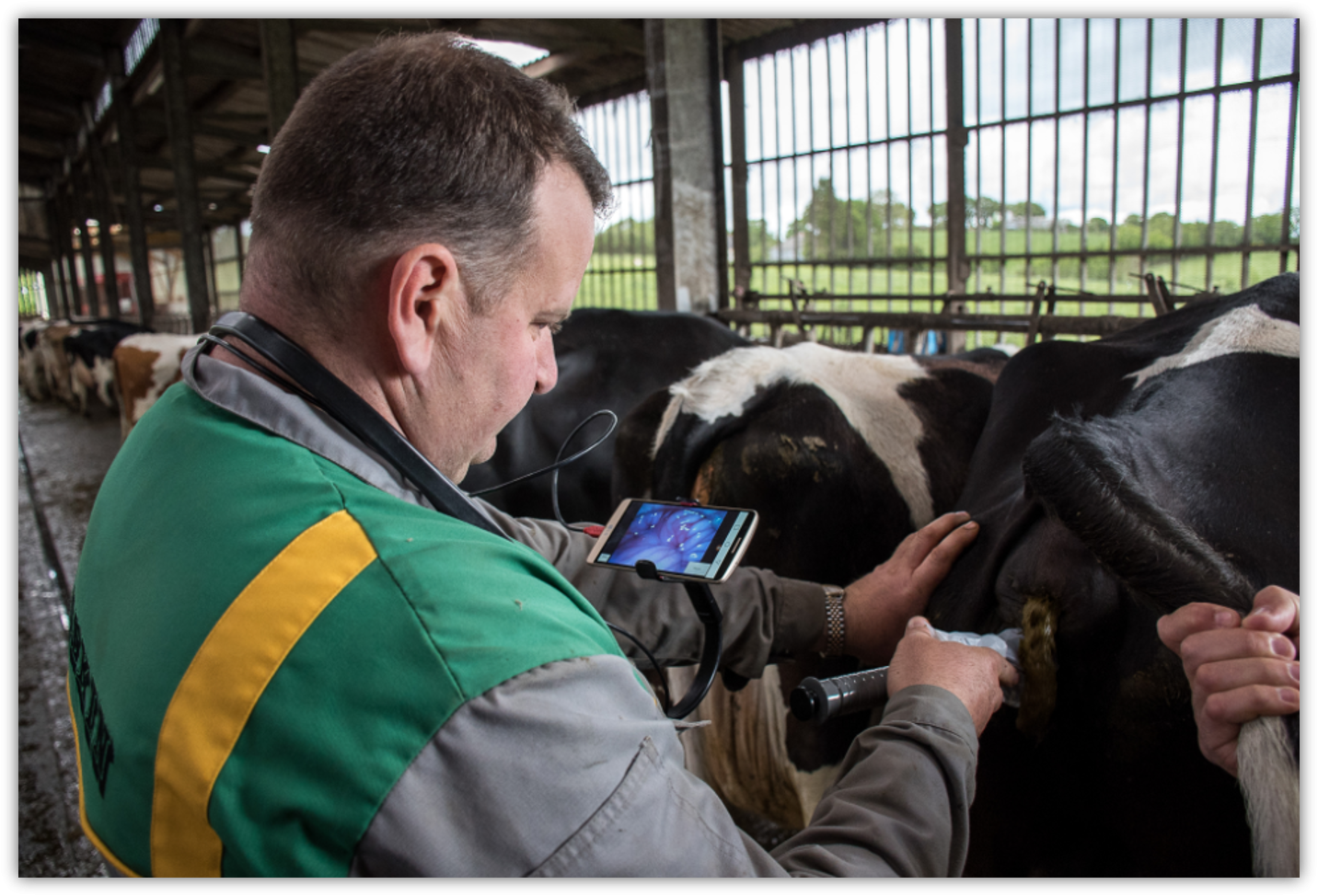
After the program, the cows are usually run with a "clean-up" bull to cover those cows that did not conceive of AI. At least 21 days should elapse after the AI program is concluded before clean-up bulls are used if the sire parentage of the calves needs to be known.
If heifers or cows need to be transported to a pasture after A.I., embryonic loss due to transportation stress is least likely to occur before day 4 after breeding or after day 45.
Unfortunately, available research does not answer all questions about details such as length of haul or trailing versus trailering. Heat stress is known to impact embryo development and the embryo is most sensitive early in development. Use low-stress handling techniques and avoid overcrowded trailers to minimise potential effects.
Preg-checking or pregnancy checking cows is done by a highly common and popular method in cattle called Rectal Palpation. Rectal palpation is the messiest, yet the cheapest and often quickest form of preg-checking that can be easily learned by all those who raise cows. The following steps below will show you how to properly pre-check a cow or heifer.
Step 1 - Confine the cow. Put the female bovine to a squeeze chute or head-gate with gates on either side that prevents her from moving side-to-side.
Step 2 - Dress up. An OB (obstetrical) suit or coveralls are best for this job. However, if you have old clothes that you don't mind getting dirty, then those will work fine as well.
Step 3 - Glove up. Put on fingered shoulder-length gloves on the one arm (preferably your strongest arm) you will use to do rectal palpation.
Step 4 - Lube up. Apply a handful of OB lubricant to your hand and rub it so that it gets above your hand as well as the inside.
Step 5 - Go in. Grab the tail with one hand (the one not gloved up), hold it up above your head (see photo above) and with the gloved one, form a kind of closed-puppet mouth configuration with your hand (thumb tip connecting with all four tips of your fingers), and with the point of the top of your fingers forming a 45 to 60-degree angle, push into the anus of the cow. You will have to push hard because the cow will be straining against you to push you out. Keep your wrist rigid and in line with the rest of your arm, and keep your elbow flexed slightly so you have enough strength to push into the cow's rectum.
Step 6 - Expel unwanted faeces that are taking up too much room. If the rectum is full of faeces, then carefully scoop the loose faecal matter with your hand and retract your hand enough so that you can expel the faeces for the cow. Expel enough of the faeces that you have room enough to work, so you can reach and find the cervix.
Step 7 - Locate the cervix. It will be below your hand, as will the rest of the female bovine's reproductive tract. You should be able to feel a hard-cylindrical shape part of the way in. If you are up to your shoulder in the cow and still can't find the cervix, you're too far in. Move back until you can feel the cylindrical object below your fingers.
Step 8 - Move further into the cow. If you have short arms, you may either need a stool to stand on or have to go in right up to your shoulder to feel for anything in the fallopian tubes or uterus of the cow.
Step 9 - Feel for the foetus and uterine tract. If you feel anything that feels like the uterus is distended, with a small oval ball of liquid floating inside it or something that feels like a foetus, then you have found that the cow is bred. If you don't feel anything of the sort, just a uterus, then she may be open (not bred.)
It takes a lot of practice to know what you're feeling. Often, it's best to preg-check 2 to 5 months into the cow's gestation period, so that you know you are feeling for something larger than a golf-ball-sized ovary. The sizes you should be feeling are according to how far along the cow are:
-
- 2 months - the size of a mouse
- 3 months - the size of a rat
- 4 months - the size of a small cat
- 5 months - the size of a large cat
- 6 months - the size of a small dog
- 7 months - the size of a Beagle
These sizes are good to go off of if you suspect the cow has aborted. A vet or bovine practitioner who has had more experience and has preg-checked more cows will be more accurate than one who has done only a few cows. Thus saying, the more practice you get or the more chances you get to preg-check cows, the more accurate you'll become.
Step 10 - Pull out and release the cow. Once you've determined if the cow or heifer is pregnant and how far along, pull your arm out of the cow, release her back into the herd, and repeat with another cow or heifer.